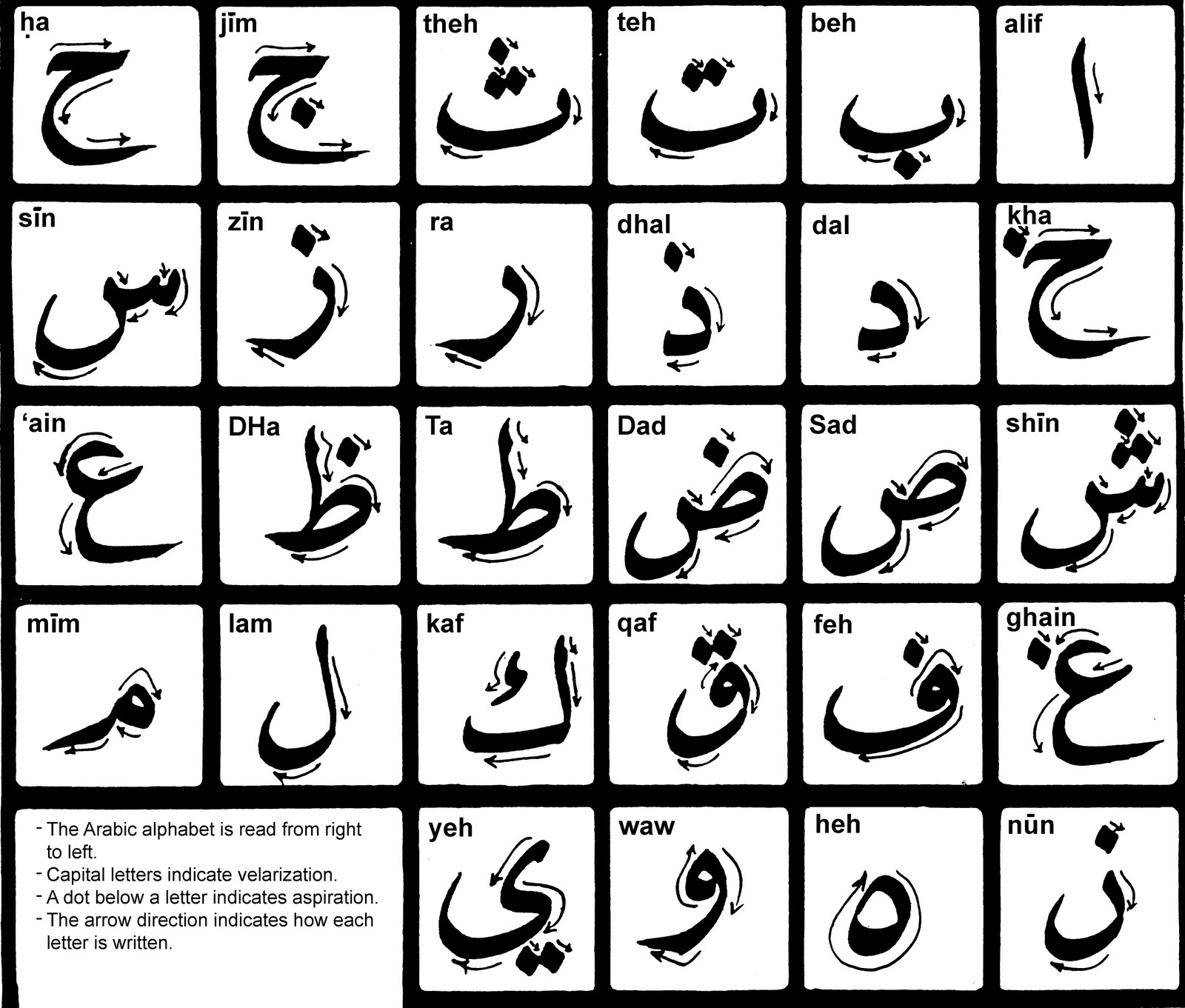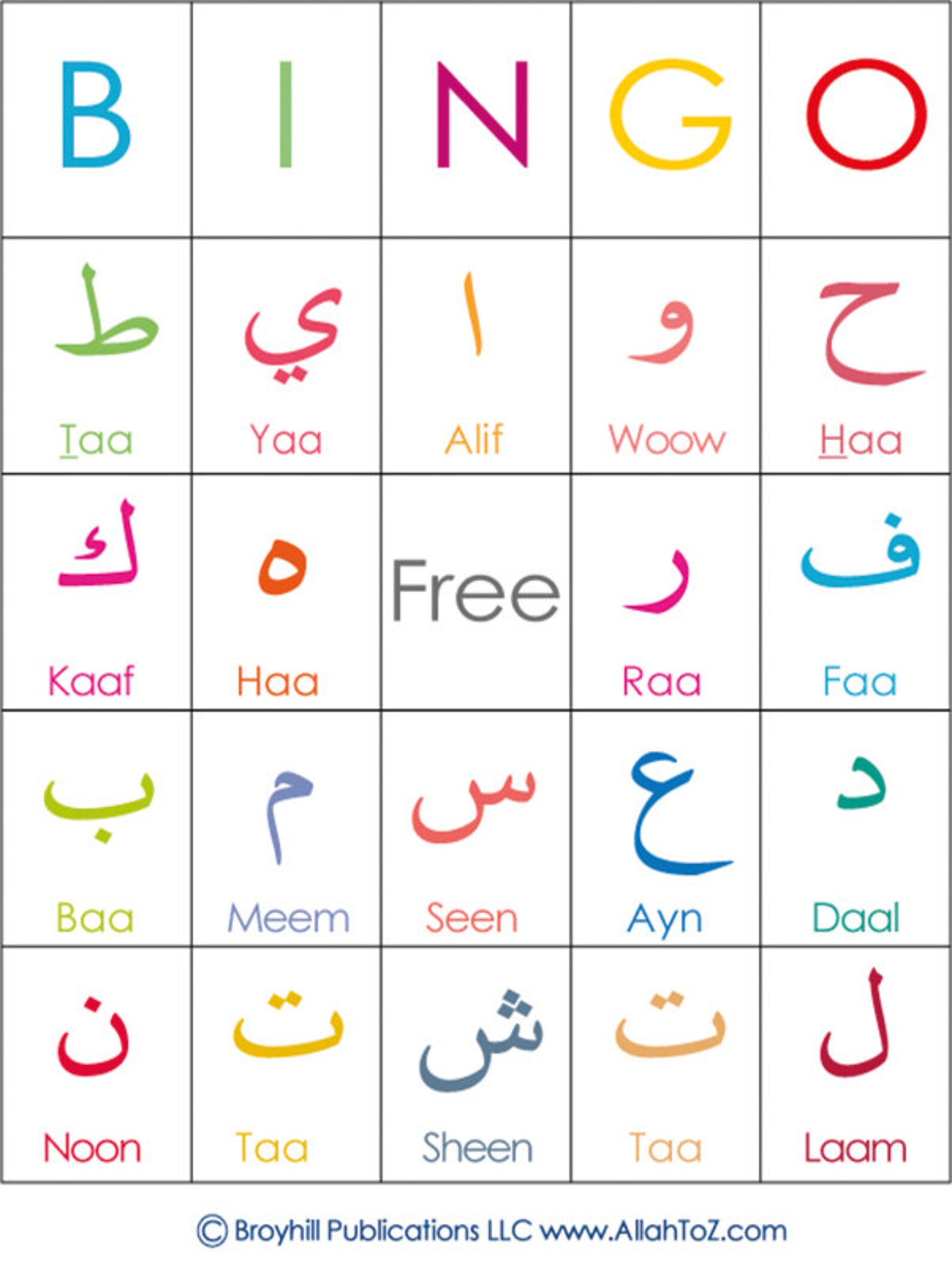
The short vowels are represented by special diacritical signs (called Harakaat) above and below the letters. Only the long vowels ا aa, ي ii, و uu are normally written in Arabic. أ (alif as a carrier of the hamza) can represent either a, i or u (as short vowels). However, it is not commonly used in the Gulf Arabic dialects. It can be carried (written above) by ا, ي and و. It is a glottal stop - something like the stop between uh and uh in uh-uh (when you agree with somebody and just say uh-uh). There is a sign in Arabic, not considered part of the alphabet - ء called hamza. This is reflected throughout our course, sometimes transliterating it as a 'D' and sometimes as a 'DH'. (4) ض ('D', Daad) is sounded out most of the times as a ظ ('DH', DHaa) even though in less relaxed speech people try to pronounce it as a a Literary 'D'. Literary سمك samak (fish) is pronounced as simach in Gulf Arabic and written either سمج or سمك. (3) ك is sometimes sounded out as a 'ch' (as in 'China')

Literary جلس jalasa (sit down) becomes yilas in Gulf Arabic and could be spelled يلس. Literary جديد jadiid (new) oftentimes becomes yidiid in Gulf Arabic and is usually spelled يديد in online forums. (2) ج is frequently sounded out as 'j' (as in 'jam') Literary قبيلة qabiila (tribe) is pronounced gabiila and spelled the same way as in Literary Arabic. One of the emirates in the UAE, الشارقة as-shaariqa, is الشارجة ash-shaarja (Sharjah) in the local dialect. (1) ق is oftentimes 'g' (as in 'gun') or 'j' (as in 'jam') Note that in Gulf Arabic speech a few of the letters have a non-standard pronunciation. The combination of ل lam and ا alif is a special sign written like this لا (pronounced 'laa', meaning 'no') as an initial or independent, and ـلا as a medial or final. When joined to the previous letter, it is written like this ـة. It is the last letter of most feminine adjectives and nouns. ة (taa marbuuTa, or 'hidden t') is not considered a letter but a variant of ه. (5) initial - the way the letter is written at the beginning of a word (4) medial - the way the letter is written when it is surrounded by letters (3) final - the way the letter is after a joining letter (if the preceding letter is not a joiner, the independent form is used)

(2) transliteration - the way the letter is transliterated with Latin letters throughout the GulfArabic course (1) independent - the way the letter is written in the alphabet or when not connected to any other letters With regards to the table columns below, note the following terms: The only difference between some of the letters is the number of dots! You will notice there are two types of letters - those that can be joined by other letters on both sides (joiners), and those that can be joined only to the preceding letter. Letters consist of strokes or strokes and dots. In Arabic, writing runs from right to left, so from an English-language perspective, we write from back to front in Arabic.

You might want to choose to go through the lessons using the transliteration and then, at the end, come here, study the alphabet, and then go through the course one more time focusing on the way words are spelled in Arabic. Note: In order to go through this course, it is not essential that you know the Arabic alphabet, as the whole course uses both the Arabic script and transliteration with Latin letters. Indeed, there are even people who write short novels in Gulf Arabic and share them in forums, for example here. V.7.9 It's Our Duty to Do the ImpossibleĪs a spoken variant of Arabic, Gulf Arabic is not normally written in books and newspapers - that's the domain of Modern Standard Arabic (except to represent authentic dialogs), however, it is used all the time in online forums, chats and text messages. V.5.8 Dealing with Government Departments G.4.6 This, That, These (Demonstrative Pronouns)


 0 kommentar(er)
0 kommentar(er)
